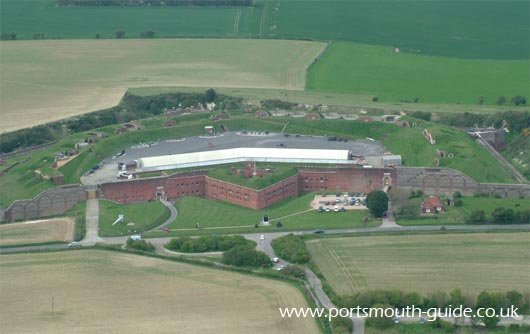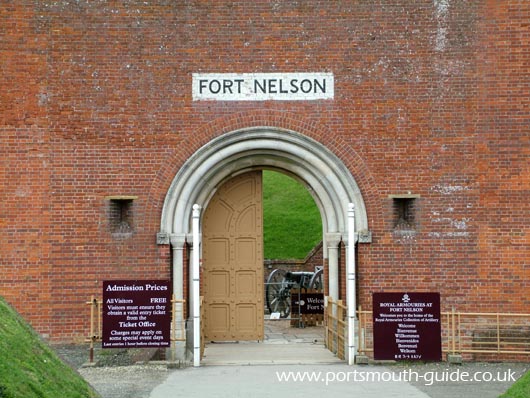



|
Fort Nelson houses the Royal Armouries collection of artillery. The 19 acre site of Fort Nelson is full of exhibits. You can go down under the Fort in its tunnels and explore, this is a cool place to be on a hot day. There are often re-enactments and firing of the guns. Exhibits include a French field gun captured at the Battle of Waterloo (1815) plus a collection of 19th and 20th century field guns, mortars and ornate bronze guns. Firing days and other special events are held regularly throughout the summer months at weekends. The museum features a number of different galleries. The "Voice of the Guns gallery" charts how artillery has helped change world history for over five hundred years. The gallery displays both big and small artillery. The "Story of Fort Nelson" tells the story of the fort and its volunteer garrison through galleries. The gallery tells the story of who commissioned and designed Fort Nelson and how it has changed through the years. The "Story of Artillery" tells the Royal Armouries story of artillery from the oldest cannons to the modern artillery.
Before Fort Nelson was built, Portsmouth's defence relied upon smoothbore guns positioned close to the shore. To protect Portsmouth from the stronger guns it was necessary to redesign all its fortifications. In the 1850s the Government decided to update the forts on the Isle of Wight, the mainland and the Solent, they also built four sea forts across the eastern approach. It was feared the French might try to come and attack over land so a line of forts were built along Portsdown hill one of which was Fort Nelson. Fort Nelson was built between 1862 and 1871, the guns of the fort faced in land not towards the sea. The guns were manned by a garrison of 200 volunteers and the forts were never attacked. High walls and towers were easy to knock down by siege guns and so Fort Nelson was built low with earth slopes facing the attacker, with slopes hiding the guns and musketry positions. In 1902 the garrison was stood down and the armaments removed although it did still continue as a military depot. It was used as a transit camp for soldiers going to France between 1914 and 1918. Although the Fort never saw action against the French it did against the Germans. On the night of 9th January 1941 the Fort was commended for supplying a further 1,220 rounds of ammunition to the guns despite being under heavy fire. As it was being used as an ammunition base its own anti-aircraft guns were placed outside its walls. The Fort continued to serve as a naval depot until the 1950s. It was then restored before being leased to the Royal Armouries in 1988 and opened to the public. The top picture shows an aerial view of Fort Nelson. The picture below that shows the main entrance to Fort Nelson which is a lively museum to visit. The Royal Armouries runs Fort Nelson and their website can be found here. For more information about Portsdown Hill click here. In 2018 Fort Nelson hosted the 'poppy wave' which was originally part of the installation at The Tower of London.
|














